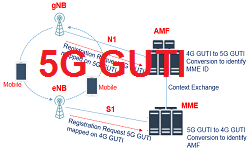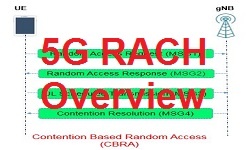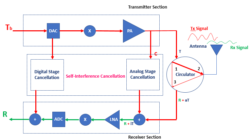5G NR System Information Type#2 | 5G SIB 2
5G SIB 2
In 5G NR, System Information Block Type 2 or SIB2 provides information which is common to intra frequency , inter frequency and inter-system cell (NR – LTE) reselection. It also provides information which is specific to intra-frequency cell reselection.
In 5G, Cell reselection can be based upon a cell level and beam level measurements. When the gNB transmits multiple beams, a UE is required to generate a cell level measurement from one or more beam level measurements.
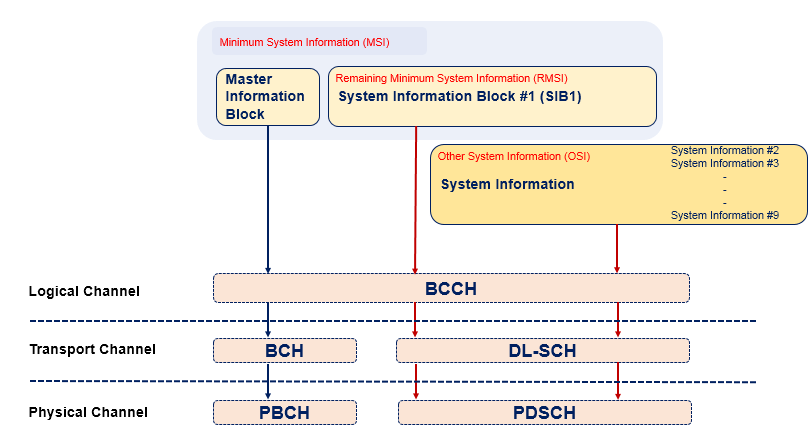
Characteristics of 5G SIB 2
- Three types of System Information in 5G namely MSI , RMSI and OSI
- SIB2 is the third types of System Information i.e. Other System Information (OSI)
- SIB2 provides information which is common to intra frequency , inter frequency and inter-system cell (NR – LTE) reselection
- SIB2 scheduling information is provided by SIB1
- SIB2 can be either broadcast periodically or broadcast on-demand or sent in a dedicated manner to UEs
- SIB2 can be configured to be cell specific or area specific
- SIB2 is mapped to BCCH logical channel, DL-SCH transport channel and PDSCH physical channel
Transmission Details
- Signalling radio bearer: Not Applicable
- RLC-SAP: TM
- Logical channels: BCCH
- Transport Channel: DL-SCH
- Physical Channel: PDSCH
- Scrambling RNTI : SI-RNTI
- Direction: gNB to UE
5G SIB 2 Content Category
Below is the category list for content provided by NR SIB 2 message to UE.
-
- Cell Reselection Info Common
- Cell Reselection Serving Freq Info
- Intra Freq Cell Reselection lnfo
5G SIB 2 Cell Reselection Info Common
cellReselectionInfoCommon structure of SIB2 provides parameters for cell re-selection information common for intra-frequency, inter-frequency and/or inter-RAT cell re-selections.

- nrofSS-BlocksToAverage and absThreshSS-BlocksConsolidation parameters are only applicable for intra-frequency cell reselection. 5G NR cell operation is a multi-beam operations, so for cell reselection the measurement quantity of a cell is driven among the beams corresponding to the same cell based on SSBs. The procedure is described below;
-
- If SIB2 is not configured with at least one of these two fields, the UE derives measurement quantity for each cell based on SSB as the strongest beam.
- If SIB2 is configured with both fields are configured, the UE derives measurement quantity for each cell based on SSB as the linear average of a set of beam. The beams are selected such that, each beam measurement is above a threshold given by absThreshSS-BlocksConsolidation and the maximum number of beams to be averaged shall not exceed nrofSS-BlocksToAverage
-
- rangeToBestCell parameter is used in intra-frequency and equal priority inter-frequency cell reselection procedures. The UE first ranks the cells according to R-criteria as specified in section 5.2.4.6 from 3GPP specification 38.304 and then uses the parameter rangeToBestCell in deciding the candidate cell.
-
- If rangeToBestCell is not configured, the UE shall perform cell reselection to the highest ranked cell
- If rangeToBestCell is configured, then the UE shall perform cell reselection to the cell with the highest number of beams above the threshold i.e. absThreshSS-BlocksConsolidation among the cells whose R value is within rangeToBestCell of the R value of the highest ranked cell.
- If there are multiple such cells, the UE shall perform cell reselection to the highest ranked cell among them.
- The network should only configure non-negative (in dB) values for this parameter.
-
- q-Hyst parameter specifies hysteresis value for ranking criteria. It is the parameter Qhyst used in the serving cell R-criteria for intra-frequency and equal priority inter-frequency cell reselections
- >speedStateReselectionPar contains parameters to determine UE’s mobility state.
- q-HystSF parameter “Speed dependent ScalingFactor for Qhyst” in TS 38.304. The sf-Medium and sf-High concern the additional hysteresis to be applied, in Medium and High Mobility state respectively, to Qhyst as defined in TS 38.304 in dB. Value dB-6 corresponds to -6dB, dB-4 corresponds to -4dB and so on.
5G SIB 2 Cell Reselection Serving Freq Info
The following summarizes the parameters details for each Information Elements (IEs) .

- s-NonIntraSearchP is the parameter SnonIntraSearchP and s-NonIntraSearchQ is the parameter SnonIntraSearchQ in 38.304 section 5.2.4.7. These parameters specifies Srxlev (RSRP) threshold and Squal (RSRQ) threshold (in dB) respectively for inter-frequency and inter-RAT measurements.
-
- s-NonIntraSearchP, actual value = field value *2 (dB) and if the field is absent, a default value of infinity shall be applied. For,
- s-NonIntraSearchQ, actual value = field value and if the field is absent, a default value of 0 dB shall be applied.
- These parameters are used by UE with following rules for NR inter-frequencies and inter-RAT frequencies which are indicated in system information and for which UE has priority provided.
- Higher priority: For an NR inter-frequency or inter-RAT frequency with a reselection priority higher than the reselection priority of the serving NR frequency, the UE shall perform measurements of higher priority NR inter-frequency or inter-RAT frequencies irrespective of thresholds provided by s-NonIntraSearchP and s-NonIntraSearchQ.
- Equal or Lower Priority: For a NR inter-frequency with an equal or lower reselection priority than the reselection priority of the serving NR frequency and for inter-RAT frequency with lower reselection priority than the reselection priority of the serving NR frequency.
- If the serving cell fulfils Srxlev > SnonIntraSearchP and Squal > SnonIntraSearchQ, the UE doesn’t have to perform measurements of NR inter-frequencies or inter-RAT frequency cells of equal or lower priority
- Otherwise, the UE should measure NR inter-frequencies or inter-RAT frequency cells of equal or lower priority.
-
- threshServingLowPandthreshServingLowQ parameters and specifies RSRP and RSRQ thresholds respectively and are used by the UE on the serving cell when reselecting towards a lower priority RAT/frequency (than serving).
-
- threshServingLowP, actual value = field value *2 (dB) and for, threshServingLowQ, actual value = field value.
- If threshServingLowQ is configured in SIB2,
- UE shall perform cell reselection to lower priority RAT/frequency (than serving) if the serving cell quality is below a threshold given by threshServingLowQ and the quality of the target cell is above certain threshold.
- Else (threshServingLowQ is NOT configured in SIB2),
- UE shall perform cell reselection to lower priority RAT/frequency (than serving) based on threshServingLowP. The UE shall proceed with the reselection only if the serving cell RSRP is below a threshold given by threshServingLowP and the RSRP of the target cell is above certain threshold.
-
- CellReselectionPriority provides the absolute priority of concerned carrier frequency and is used in the cell reselection procedure. The highest priority value is 7 and lowest priority value is 0 . It is a mandatory field.
- CellReselectionSubPriority parameter indicates a fractional value to be added to the value of cellReselectionPriority to obtain the absolute priority of concerned carrier frequency for E-UTRA and NR. Value oDot2 corresponds to 0.2, value oDot4 corresponds to 0.4 and so on. This is an optional field.
-
-
- Absolute priority = cellReselectionPriority + CellReselectionSubPriority (if configured)
-
-
5G SIB 2 IntraFreqCellReselectionInfo
The intraFreqCellReselectionInfo structure of SIB2 contains cell re-selection information common for intra-frequency cells. The following describes the detailed intraFreqCellReselectionInfo parameters.
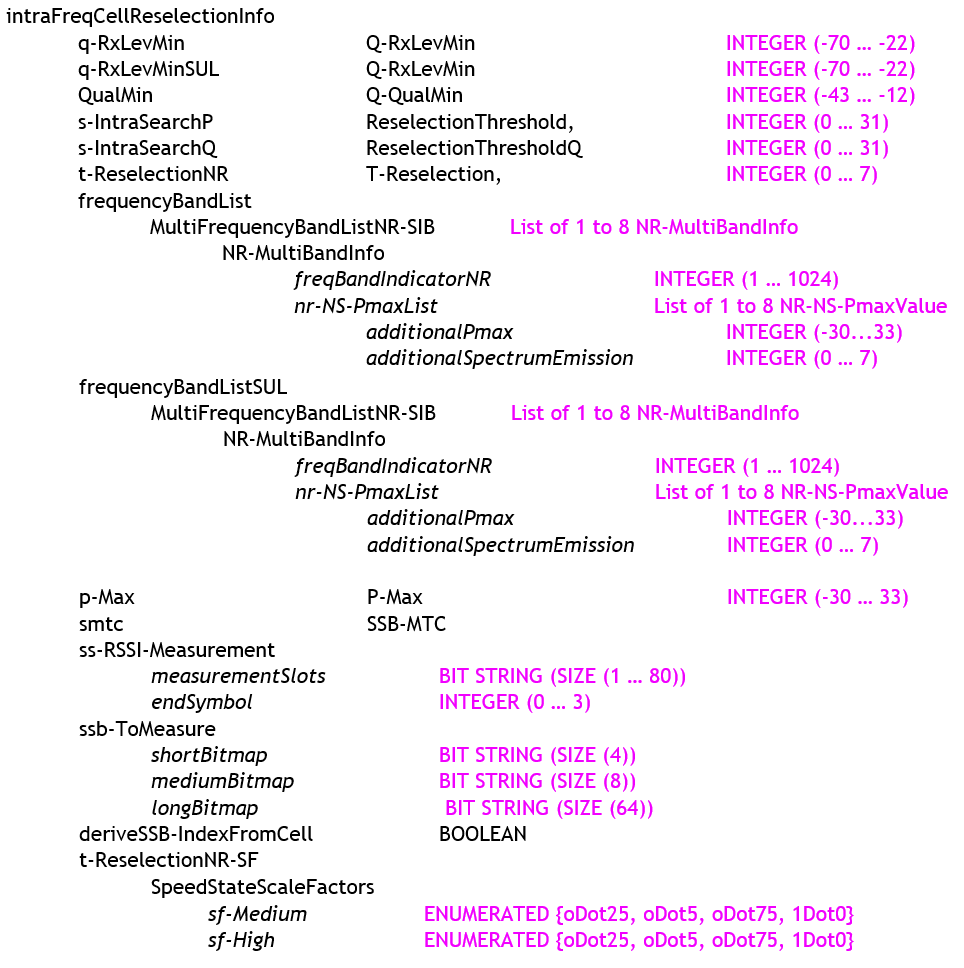
- Q-RxLevMin is used to indicate the required minimum received RSRP level (in dBm) in the (NR) cell for re-selection. Actual value Qrxlevmin = field value * 2 dBm
- Q-RxLevMinSUL: If the UE supports SUL frequency for this cell, Qrxlevmin is obtained from this field. Actual value Qrxlevmin = field value * 2 dBm
- Q-QualMin is used to indicate the required minimum received RSRQ level in dB in the NR cell for cell re-selection. If this field is absent, the UE applies the (default) value of negative infinity for Qqualmin which means that quality (RSRQ) check will always pass irrespective of the received signal quality.
- s-IntraSearchP is the parameter SIntraSearchP and s-IntraSearchQ is the parameter SIntraSearchQ in 38.304 section 5.2.4.2. These parameters specifies Srxlev (RSRP) threshold and Squal (RSRQ) threshold (in dB) respectively for intra-frequency measurements.
-
- For s-IntraSearchP, actual value = field value *2 (dB) and if the field is absent, a default value of infinity shall be applied. For, s-IntraSearchQ, actual value = field value and if the field is absent, a default value of 0 dB shall be applied.
- If the serving cell fulfils Srxlev > SIntraSearchP and Squal > SIntraSearchQ the UE need not perform intra-frequency measurements. Otherwise, the UE shall perform intra-frequency measurements.
-
- t-ReselectionNR specifies the cell reselection timer value for the concerned NR frequency.
- frequencyBandList indicates a list of frequency bands for which the NR cell reselection parameters apply.
- p-Max is the maximum permitted transmit power (in dBm) applicable for the intra-frequency neighboring NR cells.
- smtc defines Measurement Timing Configuration for intra-frequency measurements i.e., timing occasions at which the UE measures SSBs. If this field is absent, the UE assumes that SSB periodicity is 5 ms for the intra-frequency cells. It contains following two IEs.
-
- duration configures the duration in subframes of the measurement window in which to receive SSB blocks.
- periodicityAndOffset configures periodicity and offset of the measurement window in which to receive SSB blocks.
-
- ss-RSSI-Measurement is used to configure RSSI measurements based on synchronization reference signals. ss-RSSI-Measurement includes measurementslots and endsymbol information as given below.
-
- measurementSlots indicates the slots in which the UE can perform RSSI measurements. The length of the BIT STRING is equal to the number of slots in the configured SMTC window (determined by the duration and SCS). The first (left-most) bit in the bitmap corresponds to the first slot in the SMTC window, the second bit in the bitmap corresponds to the second slot in the SMTC window, and so on. The UE measures in slots for which the corresponding bit in the bitmap is set to 1.
- endSymbol: Within a slot that is configured for RSSI measurements, the UE measures the RSSI from symbol 0 to symbol given by endSymbol.
-
- ssb-ToMeasure configures a set of SS blocks to be measured within the SMTC measurement duration. When the field is absent the UE measures on all SS-blocks. SSB-ToMeasure parameters are represented by bitmap and given below.
-
- shortBitmap of length 4 is defined for fc ≤ 3 GHz as maximum number of SSBs within SS burst set equals to 4
- mediumBitmap of length 8 is defined for 3 GHz < fc ≤ 6 GHz as maximum number of SSBs within SS burst set equals to 8
- longBitmap of length 64 is defined for fc > 6 GHz as maximum number of SSBs within SS burst set is 64
-
- deriveSSB-IndexFromCell indicates whether the UE can utilize serving cell timing to derive the index of SSB transmitted by neighbour cell. If this field is set to true, the UE assumes SFN and frame boundary alignment across cells on the serving frequency.
- t-ReselectionNR-SF is the parameter “Speed dependent ScalingFactor for TreselectionNR” in 38.304.
-
- Based on the current mobility state (high or medium), multiplies TreselectionNR with sf-High or sf-Medium.
- The value of TreselectionNR after applying the respective scaling factor will always be less than or equal to TreselectionNR before scaling.
- This in general implies that, the reselections are allowed to occur faster (based on scaling factor) during medium or high mobility states. The following table summarizes the SpeedStateScaleFactors contents.
-
Related Post
- 5G NR Cell Search and Synchronization
- 5G NR System Information
- 5G Master Information Block (NR-MIB)
- 5G NR System Information Type 1 (NR-SIB1)
- 5G NR System Information Type 3 (NR-SIB3)
- 5G NR System Information Type 8 (NR-SIB8)

